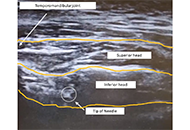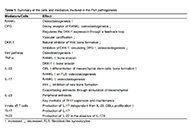7 results in Exploration of Musculoskeletal Diseases
Latest
Sort by :
- Latest
- Most Viewed
- Most Downloaded
- Most Cited
Open Access
Mini Review
Newborn hip screening experience in Türkiye
Hakan Ömeroğlu ... Feza Korkusuz
Published: February 18, 2024 Explor Musculoskeletal Dis. 2024;2:69–74
This article belongs to the special issue Baby Hip Sonography Worldwide: Experience, Results, and Recommendations

Open Access
Review
Soft tissue sarcoma: clinical recognition and approach to the loneliest cancer
Sujan Shakya ... Xiang Zhou
Published: February 06, 2024 Explor Musculoskeletal Dis. 2024;2:56–68

Open Access
Case Report
Participatory action ultrasound imaging in increasing clinician confidence with new approaches to trigger point dry needling of the lateral pterygoid
Andrew Ball ... Jordan Spennato
Published: February 05, 2024 Explor Musculoskeletal Dis. 2024;2:49–55

Open Access
Perspective
Redefining comorbidity understanding in rheumatoid arthritis through novel approaches using real-world data
Diego Benavent, Chamaida Plasencia-Rodríguez
Published: February 01, 2024 Explor Musculoskeletal Dis. 2024;2:40–48
This article belongs to the special issue Comorbidities in rheumatoid arthritis

Open Access
Review
Multifaceted aspects of chronic disease: do diffuse idiopathic skeletal hyperostosis affect the quality of life?
Greta Pellegrino ... Piercarlo Sarzi-Puttini
Published: January 23, 2024 Explor Musculoskeletal Dis. 2024;2:31–39
This article belongs to the special issue Diffuse Idiopathic Skeletal Hyperostosis- A common but neglected disease

Open Access
Review
Scoping review on remote disease monitoring in rheumatoid arthritis: does it actually help the patient?
Prakashini Mruthyunjaya ... Debashish Danda
Published: January 22, 2024 Explor Musculoskeletal Dis. 2024;2:20–30
This article belongs to the special issue Digital health technologies in rheumatology: emerging evidence and innovation

Open Access
Review
Psoriasis, bone and bowel: a comprehensive review and new insights
Fakhreddin Sabooniha
Published: January 18, 2024 Explor Musculoskeletal Dis. 2024;2:1–19

Journal Information